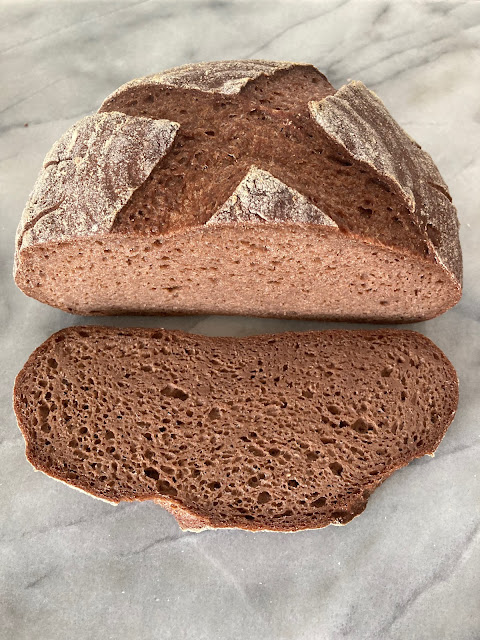Fire and Salt's French Bread Recipe
Recently I've been obsessed with gluten-free bread. How does it work? How do I make it rise? How do I give it a bread-like flavor? I've been experimenting with creating my own recipe lately and I've learned a lot. There are still some things that are a mystery to me, however. That's why I decided to make Fire and Salt's Gluten Free French Bread for the November Adopt-a-Gluten-free-Blogger event hosted by The Book of Yum.
I started with the intention of making the recipe as true to the original as possible. That being said, I have a hard time restraining myself from putting my own stamp on things, and I love making modifications. I am also known to be a little haphazard and ill-prepared, so while I double-checked that I had the list of ingredients I forgot to get a French bread pan as Brian (Fire and Salt's blogger extraordinaire) strongly suggests in his blog post. I even tried to swing by a kitchen store before heading home, but it happened to be closed on Tuesdays. I didn't trust the bread to maintain its shape without some support, so I decided I had to use something. Always ready to make due with materials on hand, I improvised this solution to the bread pan problem:

That's right. I used parchment paper and toothpicks. I followed the ingredients list to a t, but I don't have a stand mixer, so I beat the dough by hand. When it came time to rise the loaves, I decided my kitchen was too cold, so I created a makeshift shelf over my warm radiator with some chairs.
The bread rose quite a bit in there.
Brian's recipe asks you to cook the bread uncovered for the first 35 minutes, then cover it with tin foil for the last 35 minutes of cooking. Seeing as how my bread pan solution basically required that I keep the loaves covered with parchment paper for the first bit in order to hold the loaves' shape, the bread looked pasty pale still when it was halfway done cooking. I ended up cooking the bread uncovered for the last 35 minutes instead of the first 35 minutes. They came out of the oven like this:
The texture is really soft and spongy. The flavor isn't quite like what I remember French bread being, but it's a great substitute. It's amazing how much of the flavor of the bread comes from the yeast, sugar and salt in the recipe rather than the type of flour used.
All in all, I highly recommend this gluten-free French bread recipe!








Comments
If I make this style of bread again I'll try to get a french bread pan. I like how your bread came out nice and round. Thanks again for a great GF bread recipe!